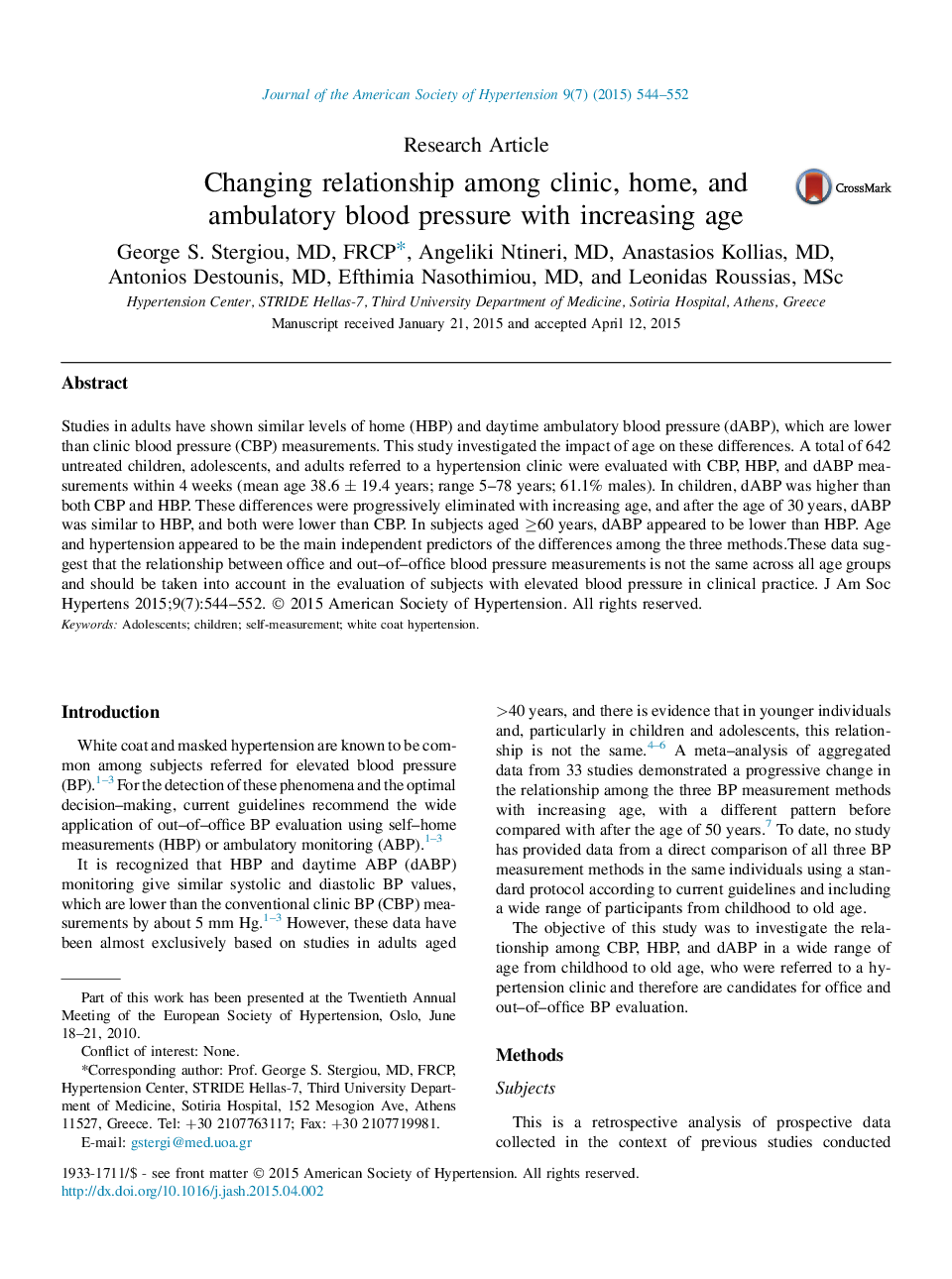| کد مقاله | کد نشریه | سال انتشار | مقاله انگلیسی | نسخه تمام متن |
|---|---|---|---|---|
| 2956323 | 1578036 | 2015 | 9 صفحه PDF | دانلود رایگان |
• The relationship between office and out–of–office BP differs across age groups.
• In children, daytime ambulatory BP is higher than both clinic and home BP.
• Subjects ≥30 years have similar daytime ambulatory and home BP with lower clinic BP.
• In subjects ≥60 years, daytime ambulatory BP may be lower than home BP.
• Age, gender, and hypertension status are the main predictors of BP differences.
Studies in adults have shown similar levels of home (HBP) and daytime ambulatory blood pressure (dABP), which are lower than clinic blood pressure (CBP) measurements. This study investigated the impact of age on these differences. A total of 642 untreated children, adolescents, and adults referred to a hypertension clinic were evaluated with CBP, HBP, and dABP measurements within 4 weeks (mean age 38.6 ± 19.4 years; range 5–78 years; 61.1% males). In children, dABP was higher than both CBP and HBP. These differences were progressively eliminated with increasing age, and after the age of 30 years, dABP was similar to HBP, and both were lower than CBP. In subjects aged ≥60 years, dABP appeared to be lower than HBP. Age and hypertension appeared to be the main independent predictors of the differences among the three methods.These data suggest that the relationship between office and out–of–office blood pressure measurements is not the same across all age groups and should be taken into account in the evaluation of subjects with elevated blood pressure in clinical practice.
Journal: Journal of the American Society of Hypertension - Volume 9, Issue 7, July 2015, Pages 544–552
